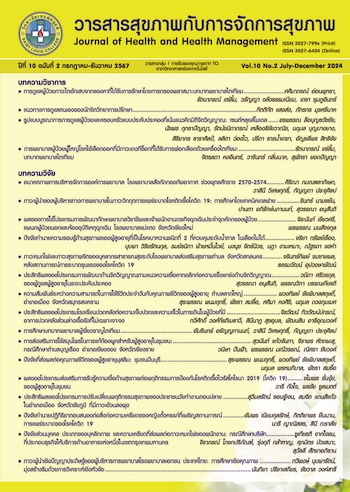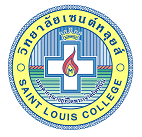Personal Factors, Personality Types, and Stress affecting to Employees’ Burnout: A Case Study of a Food Service Company in Bangkok
Keywords:
Personality Types, Employees’ Burnout, Food Service CompanyAbstract
The objectives of this survey research were 1) to study personality types, the level of stress, and employees’ burnout. 2) to compare the mean difference between stress and employees’ burnout of male and female; to compare the mean difference between stress and employees’ burnout of Generation Y and Z. 3) to study the intercorrelationships among age, personality types, stress, and employees’ burnout. 4) to study the causal factors of employees’ burnout by using personal factors (age), personality types, and stress. The samples comprised 77 employees selected by simple random sampling. The research tools were: Holland’s Six Vocational Personality Types questionnaire, a stress inventory, and a Maslach Burnout Inventory-(MBI) which had reliability .885, .828 and .843, respectively. The statistics used to analyze the data were arithmetic mean, standard deviation, Pearson’s correlation, and multiple regression. The research results were: 1) the level of stress, and employees’ burnout which they reported in the range between high and moderate levels. 2) there was not a statistically significant difference in stress, and burnout of male and female employees ; there was not a statistically significant difference in stress, and burnout of generation Y and Z. 3) Artistic Personality Type was significantly positively correlated with emotional exhaustion and burnout (r=.283 and .264, p<.05); Conventional Personality Type was significantly positively correlated with professional efficacy (r=.338, p<.01) and significantly negatively correlated with stress, emotional exhaustion, cynicism and burnout (r= -.306, -.338, -.368, p<.01 and -.261, p<.05, respectively). 4) Artistic personality Type and stress were significant predictors of employees’ burnout, explaining 50.9%.
References
ชูเกียรติ จากใจชน และพลภัทร เจริญเวียงเวชกิจ. (2557). การพัฒนาแบบประเมินบุคลิกภาพเพื่อการศึกษาต่อและการเลือกอาชีพ. กรุงเทพฯ: วิทยาลัยเทคโนโลยีสยาม.
นิชชุนันท์ ประสารพันธ์, เพลินพิศ บุณยมาลิก, และอรวรรณ แก้วบุณชู. (2564). ภาวะหมดไฟในการทำงานและปัจจัยที่เกี่ยวข้องของบุคลากรในโรงพยาบาลเอกชน กรุงเทพมหานคร. วารสารพยาบาลสาธารณสุข, 35(3), 48-63.
สำนักงานกองทุนสนับสนุนการสร้างเสริมสุขภาพ. (2566). รายงานประจำปี 2566 สำนักงานกองทุนสนับสนุนการสร้างเสริมสุขภาพ (สสส.). สืบค้นจาก https://www.thaihealth.or.th/ebook/รายงานประจำปี-2566-สำนักงาน/
Angelini, G. (2023). Big five model personality traits and job burnout: a systematic literature review. BMC psychology, 11(1), 49-84.
Holland, J. L., & Holland, J. E. (1977). Vocational indecision: More evidence and speculation. Journal of Counseling Psychology, 24(5), 404-414.
LotfiNiya, H. (2010). Investigating the Relationship between Personality Traits with Elementary Teachers’ Burnout in Tabriz. Physical Science, 3(11), 93-106.
Maslach, C., & Jackson, S. E. (1981). The measurement of experienced burnout. Journal of organizational behavior, 2(2), 99-113.
Swider, B. W., & Zimmerman, R. D. (2010). Born to burnout: A meta-analytic path model of personality, job burnout, and work outcomes. Journal of Vocational behavior, 76(3), 487-506. doi: 10.1016/j.jvb.2010.01.003
Sadeghi, A., Ofoghi, N., Niyafar, G. H., & Dadashi, K. (2015). Survey of the relationship between personality types and burnout among teachers at first period (guidance school) and second period of high school (secondary school) in the city of rasht, Iran. Creative Education, 6(8), 835-845. doi: 10.4236/ce.2015.68086
Tuna, R., & Baykal, Ü. (2014). The relationship between job stress and burnout levels of oncology nurses. Asia-Pacific journal of oncology nursing, 1(1), 33-39.
Downloads
Published
How to Cite
Issue
Section
License
Copyright (c) 2024 Journal of health and health management

This work is licensed under a Creative Commons Attribution-NonCommercial-NoDerivatives 4.0 International License.




